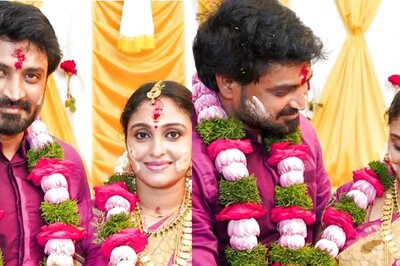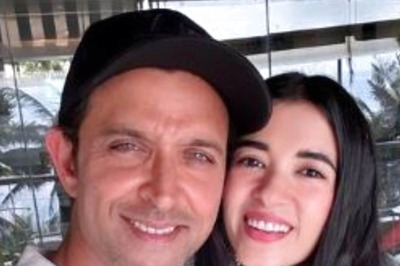
views
 The air is permeated with the stench of blood and death in a mountain somewhere in Palakkad, Kerala. Welcome to the abode of Malaippothy, hill goddess.
The air is permeated with the stench of blood and death in a mountain somewhere in Palakkad, Kerala. Welcome to the abode of Malaippothy, hill goddess.
When the annual festival arrives, people from all walks of life gather on the holy mount with pots of toddy and live chicken to appease the Malai Bhagavathy(Malaippothy). The poojari will slit the head of the cock that you have brought while holding it over a stone idol soaked in red. Now settle down somewhere in the mount and cook the chicken in obeisance to the Bhagawathy.
Chase its heat down with the cool toddy you have brought from below – the Bhagavathy is appeased.
I met a lot of youth quaffing down toddy on the holy mount. Most of them had come with their relatives and were knocking back big pots of toddy promptly refilled by their wards.
Wouldn’t it be sacrilege to say no to a ritual?
Alcohol and rituals are intrinsically connected in many cultures. Take a bus to Parassinikkadavu Muthappan temple in Kannur. “Sir, no need to raise your brows,” my student Vijeesh was a bit hurt at my insensitiveness to his beliefs when I went to his home. “We have to take it to please Muthappan (another local deity).
I am no stranger to it, my dear.
In south Kerala we have a custom named ‘Vanmuri’. On the 16th day after death, the relatives and friends of the deceased gather in the departed man’s house to offer him with food and spirits he once relished.
As the poor man who had died could take only a little from the bottle the mourners polish off the leftover drink, piously in his memory.
Fed up with these customs and think them remote?
Come with me to the Balkans (Albania, Bosnia and Herzegovina, Croatia, Macedonia, Montenegro, and Serbia) for a change. You will be welcomed at every house with a fruit-based drink with a generic name, Rakia.
Rakia is almost like our arrack, which can virtually be distilled from anything that has a bit of sugar and something ‘suckable’ in it.
So if you’re in Serbia and Bulgaria, it is plums which are used at optimum point of their ripeness to be macerated and distilled by gentle boiling in large copper pots to make Rakia. Of the different types of rakia Slivovitz made from a particular variety of plum named Madjarka is the most popular.
As far as the drinking habits are concerned, I suspect that the Balkan might have took a leaf out of us, Malayalees (Or is the other way around?). Festivals, cultural functions and rituals are handy excuses for them also to stay drunk round the year.
Be it a wedding ceremony, a funeral service or a birthday party, Rakia is the first in the guest list.
So you would see the bride’s father going around from table to table at the wedding banquet helping the guests with more and more Rakia. If you want to toss in a bit of Eastern Eurpoopean Kitsche to your wedding, order a few bottles of Slivovitz from Bulgaria or Serbia before you tie the knot.
Perhaps you wouldn’t carry the fun too far, as you learn rakia’s association with death.
Take a look at the burial services in eastern Europe, especially that of the Balkans. The mourners are directed to form a beeline to the gates of the cemetery at the end of the service. They will be given a piece of dry bread and a glass of rakia. With tearful eyes they would let a few drops fall into the consecrated ground. “May God receive this for him,” they mumble and then proceed to finish the remaining drink in one go.
The Balkan firewater with around 60% abv(whisky has only 40% abv) is sure to draw some bitter emotions during the funeral service.
(Manu Remakant is a freelance writer who also runs a video blog - A Cup of Kavitha - introducing world poetry to Malayalees. Views expressed here are personal)




















Comments
0 comment